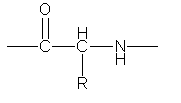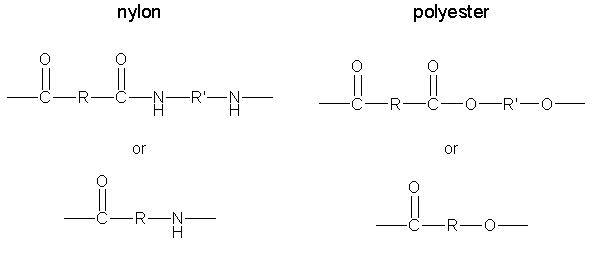
(O is oxygen).
| MadSci Network: Physics |
You have asked a question that really involves about four more years of chemistry!
The first thing you need to make clear is the difference between an element and a compound. An element is a particular sort of atom, composed of a positively charged nucleus surrounded by a cloud negatively charged electrons. Examples of elements are carbon, which is given the chemical symbol C, magnesium (Mg), hydrogen (H), and sodium (Na). The electrons in an atom are organised into different energy states called orbitals; those closest to the nucleus will be at the lowest energy state and those furthest away will have the highest energy. Only the ones in the outermost one, called the valence orbital, are able to move from one atom to another; the inner electrons are tightly bound to the positively-charged nucleus of the atom. For movement to happen, there has to be somewhere for the electrons to go to, so if the valence orbital is full of electrons, the substance will not be conductive. In metals, many atoms are combined in a crystal, and the combination of orbitals on different atoms leads to a 'smearing-out' of these energy states to form a 'valence band' - this can overlap with unoccupied energy states beyond the original valence orbital energy, so that metals like Mg, which have a full valence orbital as isolated atoms, are still conductive. You can find how many electrons are in the valence orbital of an atom and whether it is full or not by looking it up on a periodic table. Have a look at the figure 'Electronic configuration of Scandium' in WebElements - the line marked 3d is the valence orbital. There is one arrow in it, representing an electron and nine empty spaces for electrons to go, so you can see that this element ought to be a decent conductor.
However, all of your materials are not elements, but compounds, made up of atoms from several different elements. In each of your compounds, the valence electrons are not free to wander around because they are shared between particular atoms to form bonds; this gives a three-dimensional arrangement of atoms called a molecule. It is very difficult for an electron to get from one molecule to another and most solid molecular substances are very poor conductors indeed. I am afraid that the ones you have listed are all about as bad as each other.
Your substances are all examples of what are called polymers. These are very long molecules built up from smaller parts called monomers. Each polymer molecule will contain hundreds or thousands of monomer units in a long chain.
Cotton and rayon are both examples of cellulose; rayon is produced
largely from the cellulose in wood, while cotton naturally produces
cellulose of very high purity. Giving the atoms their symbols and showing
the bonds between them as lines, the structure of the monomer for cellulose
is:

(O is oxygen).
Wool has a complicated structure on a scale very much larger than that
of a molecule, but is mostly made of a protein called keratin. Proteins
are polymers composed of monomers called amino acids - in the structure
below, N is nitrogen and R stands for any of twenty or so different
combinations of atoms.
There are several kinds of polyester and several kinds of nylon; the
basic structures of these are shown below. R and R' are usually chains made
up of carbon and hydrogen; in
nylon-6,6
, one of the most common varieties, R is CH2 CH2
CH2 CH2 and R' is CH2 CH2
CH2 CH2 CH2 CH2.

Try the links in the MadSci Library for more information on Physics.